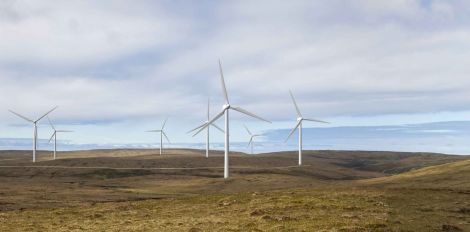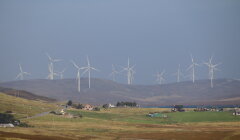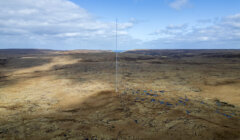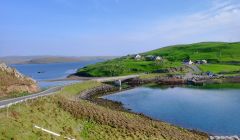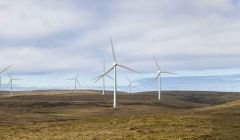Climate / Approving wind farm would be big step in making Yell carbon neutral, developer says
THE SCOTTISH Government giving the green light to the proposed Energy Isles wind farm would “mark a major step” in plans to turn Yell carbon neutral, according to its developer.
The island is already the base for tidal turbines, as well as the small community-owned Garth wind farm. Meanwhile the 17-turbine Beaw Field wind farm has consent, but yet to be constructed.
Still outstanding is the 18-turbine Energy Isles wind farm in the north west of the island, which is going through the process of seeking consent from the Scottish Government.
Its developer Statkraft believes giving the wind farm approval would go some to helping Yell become carbon neutral.
Project manager Rebecca Todd said: “The communities in Yell and the North Isles have been clear in their support for reducing emissions through renewable energy.
“Planning permission for the Energy Isles wind farm will mark a major step in helping the island achieve carbon neutrality by 2040 and we look forward receiving the Scottish Government’s decision on the project soon.”
Derek Jamieson, project director for Energy Isles Ltd said: “We’re pleased that the Scottish Government is recognising the work that the community in Yell is doing to become carbon neutral.
“The Energy Isles windfarm has the potential to generate enough power for 157,000 homes, generating clean energy not just for Yell and Shetland as a whole, but helping to power the Mainland as well.”
During the planning process concern has been raised over the impact on peatland – a natural carbon store.
The Scottish Environment Protection Agency (SEPA) was one of a number of consultees which initially objected to plans for the wind farm, saying building the turbines on the peat bog there would have a “negative impact on climate change”.
Become a member of Shetland News
But after the proposals were altered, with the number of turbines down and the development’s footprint reduced, SEPA and some others withdrew objections.
During the planning process Shetland Amenity Trust’s Paul Harvey also claimed the development “flies in the face of the Scottish Government’s wish to mitigate climate change”.
But had Jamieson said in response that the development’s peat management plan will “not only minimise the impact on the site itself but regenerate vital carpet bog areas elsewhere as well for a net gain in the amount of quality peatland here in Shetland”.
A Scottish Government calculator says it would take 1.7 years to pay back the emissions associated with constructing the wind farm.
But Harvey previously said the equation used in calculations is “considered by many with expertise in that field not to be fit for purpose”.
Become a member of Shetland News
Shetland News is asking its many readers to consider paying for membership to get additional features and services: -
- Remove non-local ads;
- Bookmark posts to read later;
- Exclusive curated weekly newsletter;
- Hide membership messages;
- Comments open for discussion.
If you appreciate what we do and feel strongly about impartial local journalism, then please become a member of Shetland News by either making a single payment, or setting up a monthly, quarterly or yearly subscription.






